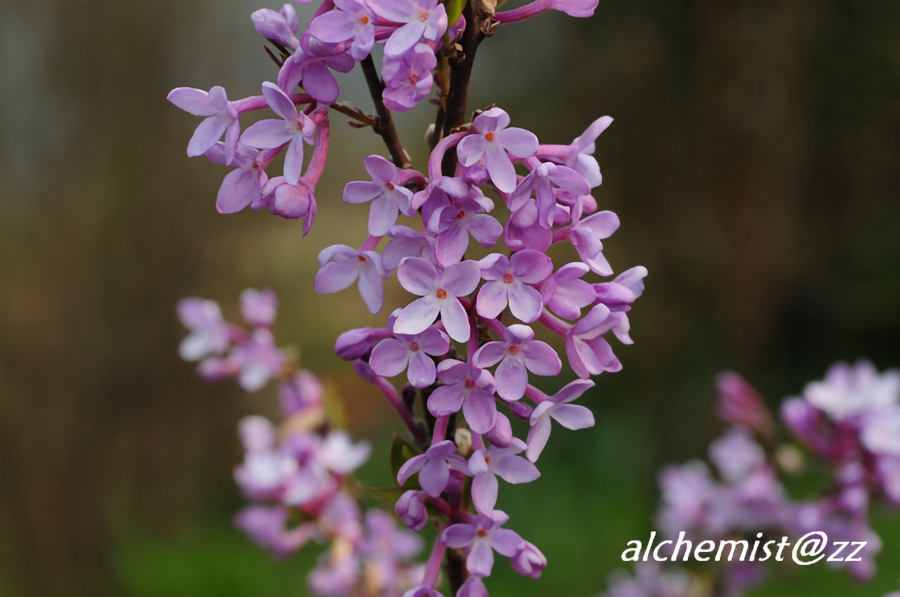- Scientific Name: Daphne genkwa Siebold & Zucc.
- Ref: Fl. Jap. 1:137. 1835
- Synonyms: Daphne fortunei Lindl.; Wikstroemia genkwa (Siebold & Zucc.) Domke
- English Common Name: lilac daphne
- Chinese Common Name: 芫花 yuánhuā
- Japanese Common Name: フジモドキ [藤擬] fujimodoki
- Family: Thymelaeaceae
- Genus: Daphne
- Distribution: Forests, shrubby slopes; 300-1000 m. Anhui, Fujian, Gansu, Guizhou, Hebei, Henan, Hubei, Hunan, Jiangsu, Jiangxi, Shaanxi, Shandong, Shanxi, Sichuan, Taiwan, Zhejiang [Korea].
Shrubs deciduous, 0.3-1 m tall. Branches many, yellowish green or purplish brown, densely yellowish sericeous. Leaves opposite, subopposite, or alternate; petiole almost absent to 2 mm, gray pubescent; leaf blade ovate, ovate-lanceolate, or elliptic-oblong, 3-4(-6) × (0.5-)1-2 cm, papery, abaxially sericeous, base broadly cuneate or rounded, apex acute or shortly acuminate; lateral veins 5-7 pairs. Inflorescences mostly lateral, produced before leaves, less often terminal on long shoots or axillary, 3-7(-15)-flowered; peduncle usually very short, better developed on later inflorescences. Flowers not fragrant; pedicel short, grayish yellow pubescent. Calyx bluish purple, lilac, or lavender; tube cylindric, 6-11 mm, slender, exterior sericeous; lobes 4, ovate or oblong, 5-6(-10) × ca. 4 mm, abaxially puberulous, apex rounded. Stamens 8, lower whorl inserted at middle of calyx tube, upper whorl below throat; filaments short; anthers ovoid-ellipsoid, ca. 1 mm, upper ones partly exserted from calyx tube; disk annular. Ovary obovoid, ca. 2 mm, densely yellow pubescent; style short or absent; stigma capitate. Drupe white to reddish, black when dry, ellipsoid, ca. 4 mm, enclosed in persistent calyx. Fl. Mar-May, fr. Jun-Jul. (Flora of China)
